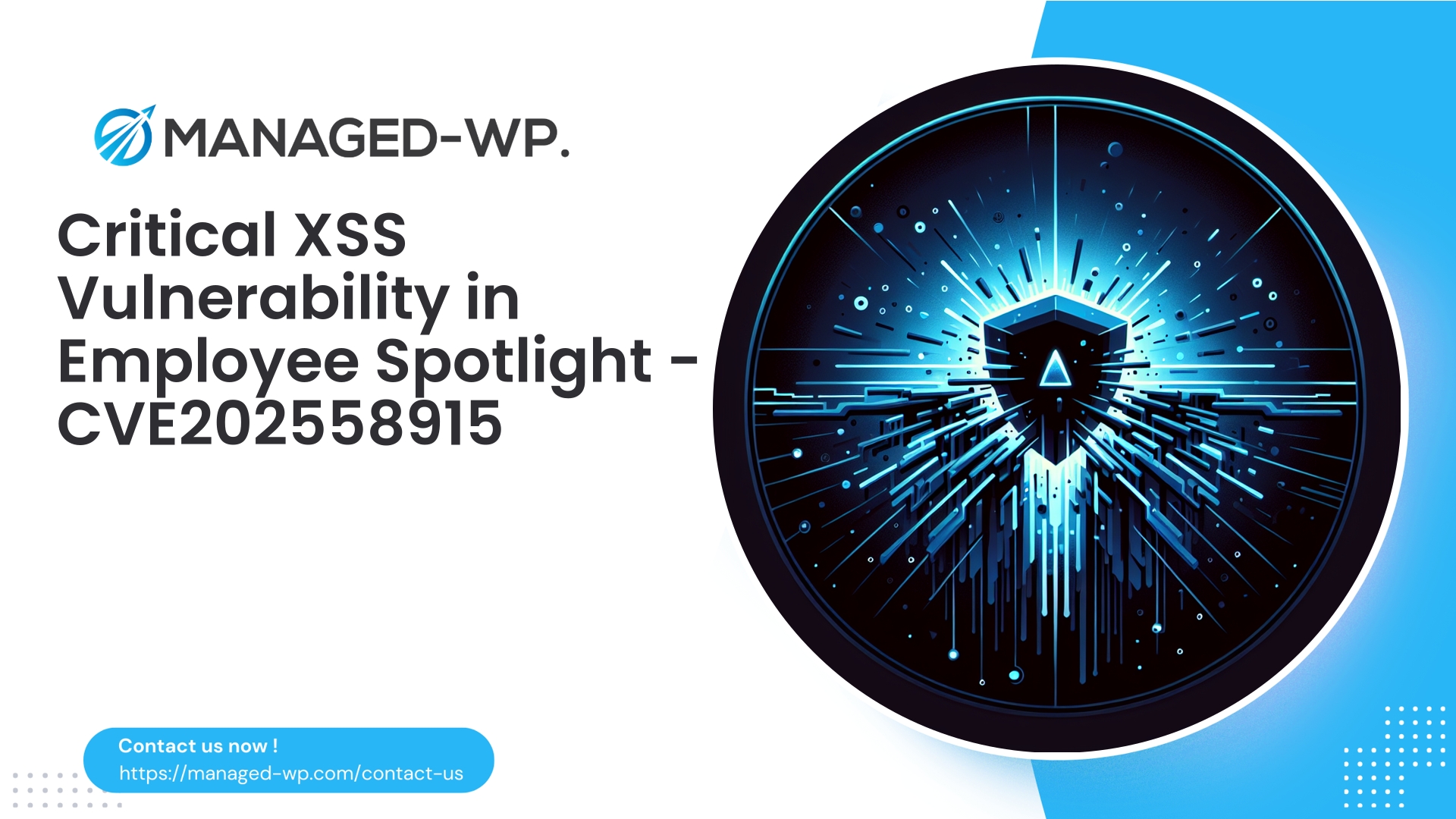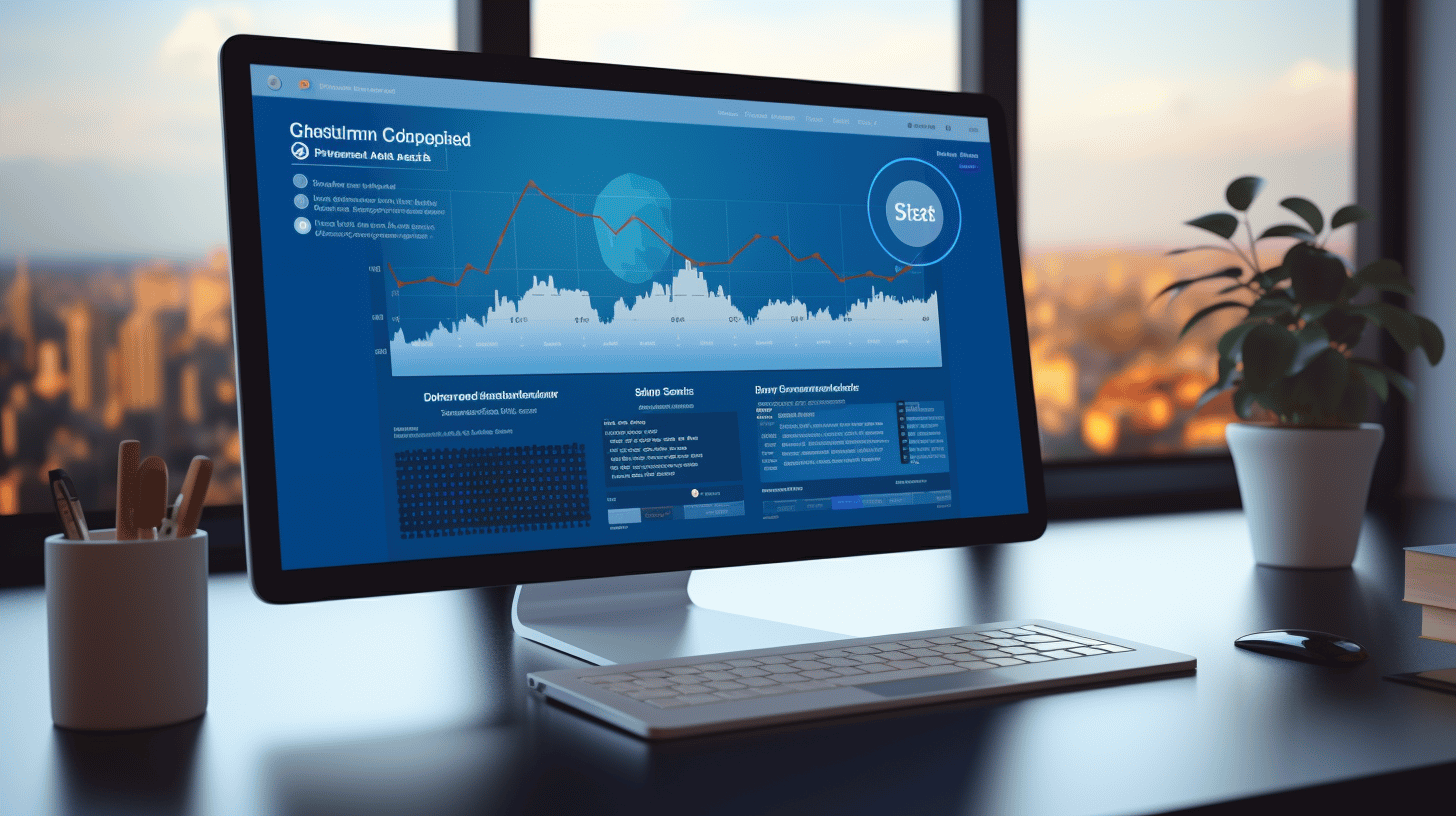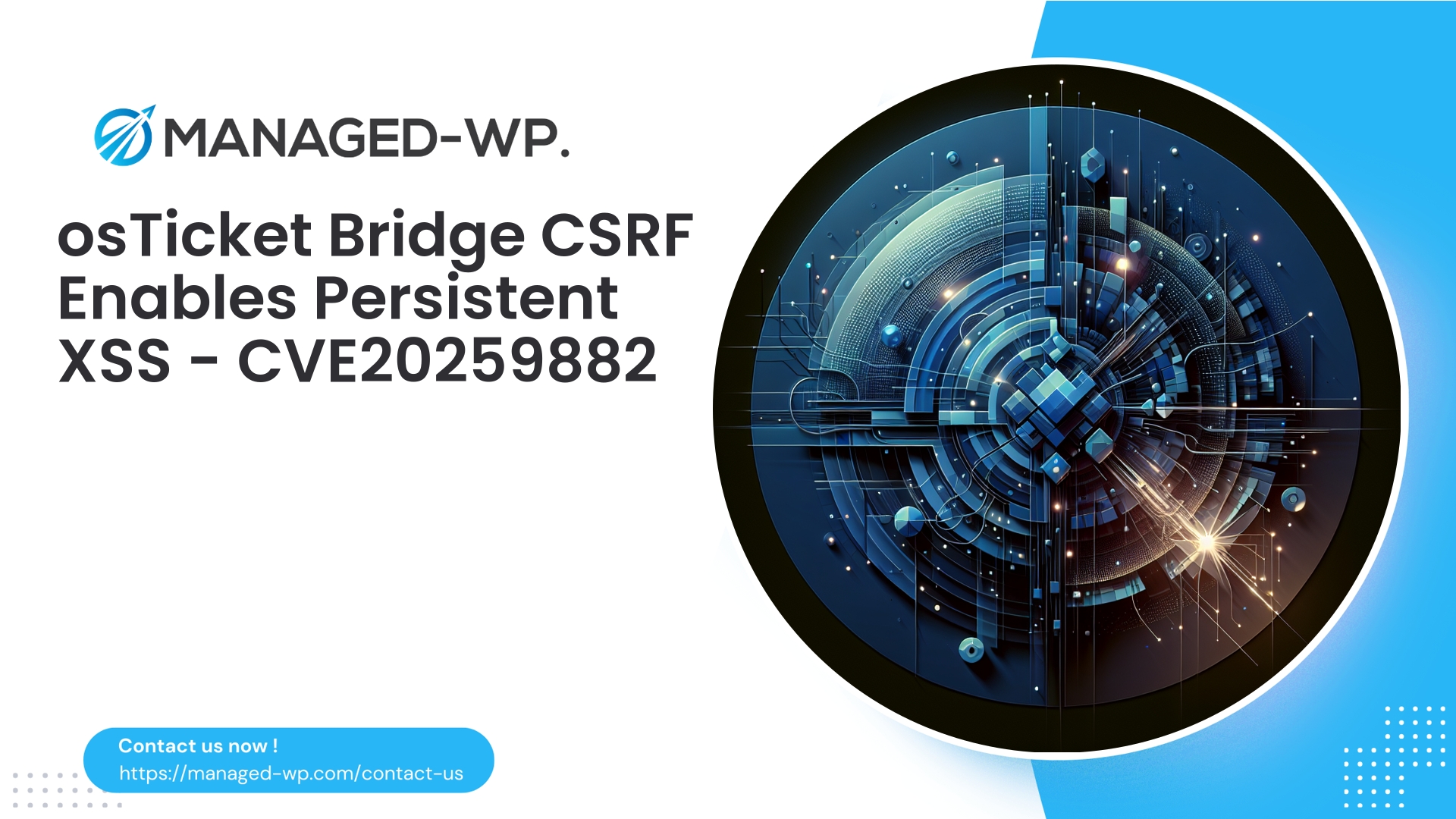| Plugin Name | Employee Spotlight |
|---|---|
| Type of Vulnerability | Cross-Site Scripting (XSS) |
| CVE Number | CVE-2025-58915 |
| Urgency | Low |
| CVE Publish Date | 2025-09-23 |
| Source URL | CVE-2025-58915 |
Employee Spotlight <= 5.1.0 — Cross‑Site Scripting (XSS) Vulnerability (CVE‑2025‑58915)
On September 23, 2025, a critical security advisory disclosed a Cross‑Site Scripting (XSS) vulnerability in the Employee Spotlight WordPress plugin, affecting all versions up to and including 5.1.0. This vulnerability, tracked as CVE‑2025‑58915, has since been addressed in version 5.1.1. Notably, a contributor-level user can exploit this security flaw.
At Managed-WP, we operate with the mindset of US security experts focused on pragmatic WordPress security solutions. Our mission is to empower site owners with a clear understanding of the risk this vulnerability poses, its technical underpinnings, immediate mitigation steps, and long-term strategies to fortify your site against similar threats. This analysis is drawn from real-world security experience, beyond abstract theoretical risks.
Key Details at a Glance
- Vulnerability: Cross‑Site Scripting (XSS)
- Impacted Plugin: Employee Spotlight
- Affected Versions: <= 5.1.0
- Resolved in Version: 5.1.1
- CVE Identifier: CVE‑2025‑58915
- Privilege Required: Contributor (can submit or edit content but lacks full publishing rights)
- Report & Publication Dates: Reported on April 28, 2025; Published on September 23, 2025
- CVSS Score: 6.5 (medium/low impact on some rating scales)
Why This Matters: Executive Summary for WordPress Site Owners
Cross‑Site Scripting vulnerabilities enable attackers to inject malicious client-side scripts that execute in the browsers of unsuspecting users. While the necessity for Contributor-level access might seem limiting, in practice, Contributor roles are frequently assigned on multi-author blogs, corporate intranets, and staffing websites – environments where multiple users can submit content.
Given that Employee Spotlight typically presents team member bios publicly or within admin previews, this stored XSS vulnerability can lead to widespread risks — including redirecting visitors, executing unwanted advertisements, stealing cookies and session tokens, or facilitating privilege escalation and persistent backdoors. Such impacts can compromise site integrity, user privacy, and organizational security.
Understanding the Vulnerability Type and Attack Vector
Cross‑Site Scripting (XSS) is commonly classified into three types:
- Stored (Persistent) XSS: Malicious code saved on the server and rendered later to users.
- Reflected XSS: Injected scripts that immediately reflect back from the server within a response.
- DOM-based XSS: Script injection occurring by unsafe client-side DOM manipulation.
Based on the advisory, this vulnerability is a stored XSS where a contributor-level user can input crafted HTML or JavaScript into fields such as bio, title, or description. The plugin fails to adequately sanitize or escape this input before rendering, allowing malicious scripts to run in browsers of other users viewing these profiles.
Root Causes (High Level)
- Acceptance of input from untrusted contributor accounts without sufficient sanitization.
- Omission of proper output encoding or escaping when displaying the stored data.
- Allowing HTML or event-handler attributes in fields expected to be plain text or sanitized content.
Potential Real-World Impacts
Though we will not provide exploit code, here are scenarios attackers could pursue:
- Redirect visitors to phishing or malicious websites.
- Inject unwanted advertisements or intrusive pop-ups.
- Steal authentication cookies or session tokens for account hijacking.
- Use XSS to impersonate admins and perform unauthorized actions if anti-CSRF protections are insufficient.
- Deploy persistent malicious scripts to maintain ongoing access.
Despite a medium CVSS rating, actual risk depends heavily on your site’s setup, protective layers like WAF or CSP, and user exposure. XSS vulnerabilities should always be treated with high priority.
Immediate Mitigation Steps
If you operate a WordPress site using Employee Spotlight, follow these actions without delay:
- Verify Plugin Version
Access WP Admin > Plugins and confirm whether Employee Spotlight is updated to 5.1.1 or later. If yes, you are protected. - Update if Vulnerable
Versions up to 5.1.0 must be updated immediately to 5.1.1 or newer. - Temporary Mitigations if Update is Delayed
- Deactivate the Employee Spotlight plugin temporarily.
- Restrict Contributor roles from creating or editing employee profiles.
- Disable any public submission forms accepting profile data.
- Sanitize Content
Review existing profile entries for suspicious HTML or scripts. Remove or neutralize unsafe tags (e.g., <script>, <iframe>, event attributes). - Harden User Privileges
Audit user roles and minimize privileges. Enforce strong passwords and enable Multi-Factor Authentication (MFA) particularly on admin accounts. - Rotate Credentials if Compromise Signs Appear
Change administrator passwords, API keys, and review audit logs. - Enable Monitoring and Logging
Watch for suspicious plugin activity or repeated attempts to inject malicious content.
How Managed-WP Supports You (Virtual Patching and Ongoing Protection)
Managed-WP offers a comprehensive managed WordPress security service that includes:
- Proactive Vulnerability Detection: We continuously monitor disclosure feeds and develop targeted detection rules.
- Virtual Patching: For sites unable to update immediately, our WAF applies virtual patches to block exploit attempts targeting this XSS flaw in real time.
- Automated Content Scanning & Cleanup: Our malware scanners detect and remediate injected scripts in vulnerable plugin fields, reducing risk from stored payloads.
- Actionable Alerts: We send prioritized security alerts with clear remediation advice and detailed incident response guidance.
Note: Virtual patching mitigates exposure but is not a substitute for applying official plugin updates as soon as they are available.
Post-Update Verification Checklist
After updating Employee Spotlight to 5.1.1 or later, confirm the following:
- The plugin version in WP Admin reflects 5.1.1+.
- Clear all caching layers to serve fresh, sanitized content.
- Check pages displaying employee bios for any leftover suspicious content.
- Run a full site scan using Managed-WP’s security tools or similar scanners.
- Review recent activity logs of Contributor accounts for unexpected modifications.
Technical WAF Guidance for Detecting and Blocking Exploits
When crafting WAF rules for this vulnerability, focus on balancing security with minimizing false positives:
- Whitelist Expected Input
Allow only safe characters in plain text fields like name and job title. Reject angle brackets and javascript: URIs. - Block Known Script Patterns
Filter payloads containing <script>, event attributes (onerror=, onload=), or encoded script payloads. - Enforce Contextual Encoding
Ensure the plugin applies proper HTML escaping on all output rendering user content. - Use Heuristic Scoring
Combine several suspicious indicators before blocking or alerting. - Monitor Contributor Behaviors
Flag contributors submitting suspiciously large HTML content or multiple rapid submissions.
Warning: Aggressive rules may block legitimate content. Extensive testing in staging environments with logging enabled is recommended before deploying blocking rules into production.
Recommended Security Hardening Beyond This Patch
- Enforce Least Privilege
Limit Contributor role capabilities to only what’s necessary. - Sanitize Inputs & Escape Outputs
Adopt WordPress sanitization functions (e.g.,sanitize_text_field,wp_kses_post) and escape output properly. - Implement Content Security Policy (CSP)
Use CSP headers to restrict script sources and reduce impact of injected scripts. - Secure Cookies
Flag session cookies with HttpOnly and Secure attributes to prevent client-side access. - Use Nonces for CSRF Protection
Protect data-modifying forms with WordPress nonces. - Disable File Editing
Adddefine('DISALLOW_FILE_EDIT', true);in wp-config.php to prevent PHP file modifications via admin. - Keep All Components Updated
Regularly patch plugins, themes, and core WordPress installations. - Enable Two-Factor Authentication (2FA)
Protect admin and privileged accounts with MFA.
Indicators of Compromise (IoCs) to Monitor
Watch for these signs that indicate possible exploitation:
- Unexpected JavaScript or HTML tags in employee bios or plugin data fields.
- New or suspicious Contributor or admin user accounts.
- Unusual outbound network requests from your site.
- Security alerts reporting blocked attempts with script payloads.
- Spike in user complaints about redirects or pop-ups.
If these appear, initiate your incident response protocols immediately.
Incident Response: Steps if Your Site Is Compromised
- Isolate the Site
Place your site in maintenance mode to limit damage during investigation. - Backup for Forensics
Create comprehensive backups of files and databases and store offline. - Remove Malicious Code
Clean injected scripts from content and code files. Consider reinstalling core/plugin/theme files from trusted sources. - Rotate Credentials
Change all admin passwords and API keys potentially exposed. - Conduct Thorough Malware Scanning
Use trusted tools to verify complete removal of threats. - Audit User Accounts
Disable or delete unknown or suspicious users. - Enhance Monitoring Post-Cleanup
Maintain heightened vigilance for 30+ days to detect re-entry attempts.
If the compromise impact is extensive or complex, seek professional incident response services promptly.
Safe Testing Checklist for Developers
- Always test in a staging environment replicating production conditions.
- Use benign test payloads that simulate malicious inputs without harmful effects.
- Monitor logs and confirm no test data leaks to production.
- Verify that plugin fields designated plain text reject raw HTML and event attributes post-patch.
The Bigger Picture: CVSS Scores and Severity Ratings
While CVSS scores provide useful prioritization guidance, they are not absolute indicators of risk. For WordPress sites, consider:
- Exposure: Whether vulnerable content is publicly accessible or limited to admin previews.
- User Roles: The number and activity of Contributor users able to input data.
- Site Hardening: Presence of WAF, CSP, Secure cookies, and other compensating controls.
- Business Impact: Potential cost of redirects, data breaches, or service disruptions.
Always evaluate each vulnerability with your environment’s unique context in mind.
Timeline & Attribution
- Reported by security researcher: April 28, 2025
- Public advisory published: September 23, 2025
- Fix released in Employee Spotlight version: 5.1.1
This sequence highlights the importance of prompt patching and interim protections.
Start Protecting Your Site Today — Managed-WP Basic (Free) Plans
Every WordPress site benefits from baseline managed protection as vulnerabilities emerge. Managed-WP’s Basic (Free) tier includes:
- Managed firewall with unlimited bandwidth
- Advanced WAF rules curated by security experts
- Malware scanning and OWASP Top 10 risk mitigation
Gain reliable, immediate protection as you roll out patches. Sign up now at: https://my.wp-firewall.com/buy/wp-firewall-free-plan/
Professional teams can also upgrade to advanced tiers with automation, virtual patching, and comprehensive remediation features.
Final Recommendations
- Update Employee Spotlight plugin to version 5.1.1 or higher immediately.
- If updating isn’t feasible now, temporarily disable the plugin or restrict Contributor access accordingly.
- Review and cleanse stored profile data to remove malicious code.
- Adopt least privilege principles, enable strong admin protections (including MFA), and secure cookies.
- Leverage Managed-WP’s managed WAF to protect against exploitation until official patches are deployed.
- Monitor logs vigilantly for signs of suspicious activity and indicators of compromise.
For assistance with vulnerability remediation, virtual patch deployment, or comprehensive site security, the Managed-WP team is ready to support you. Our Basic free plan is an excellent first step to immediately minimize risk: https://my.wp-firewall.com/buy/wp-firewall-free-plan/
Stay vigilant and keep your WordPress sites secure.
— Managed-WP Security Team



















